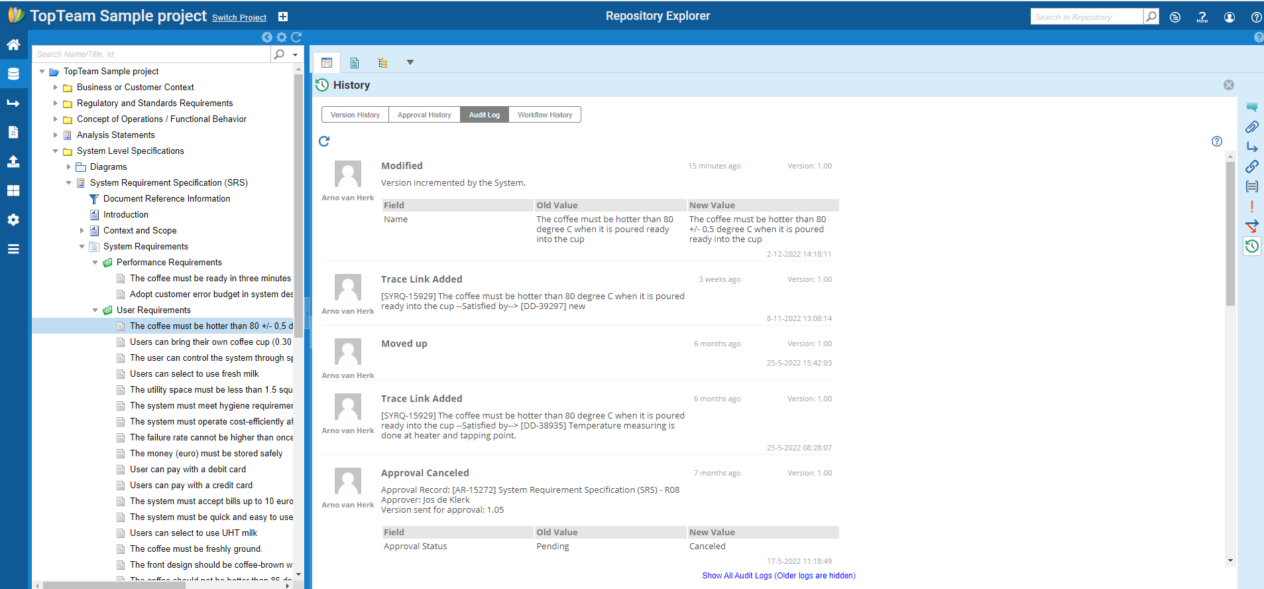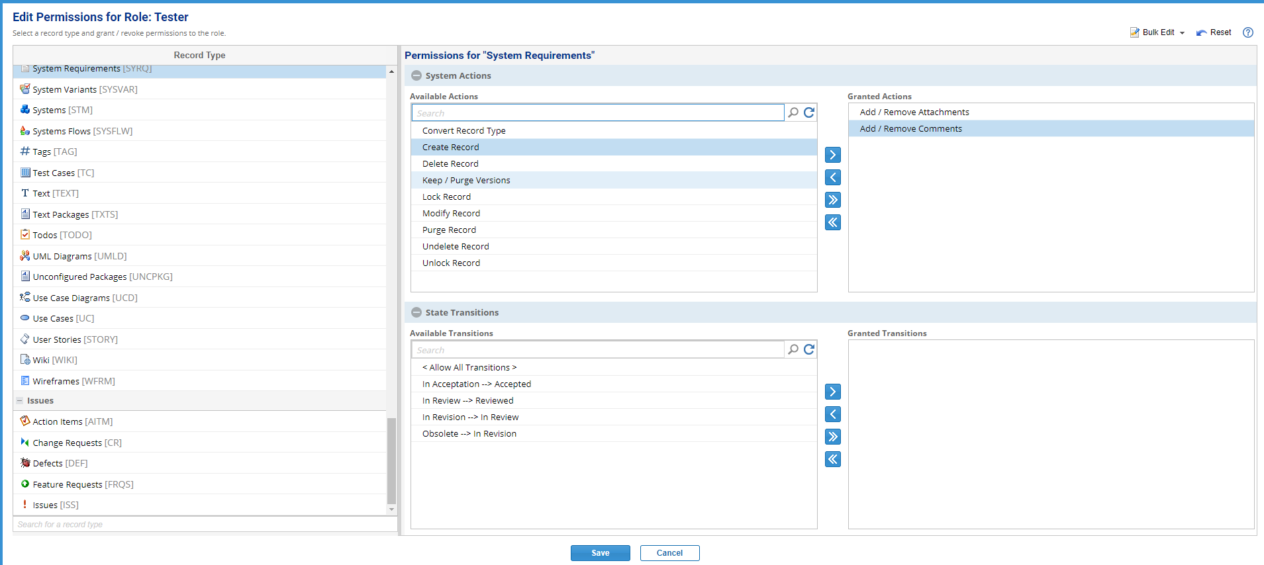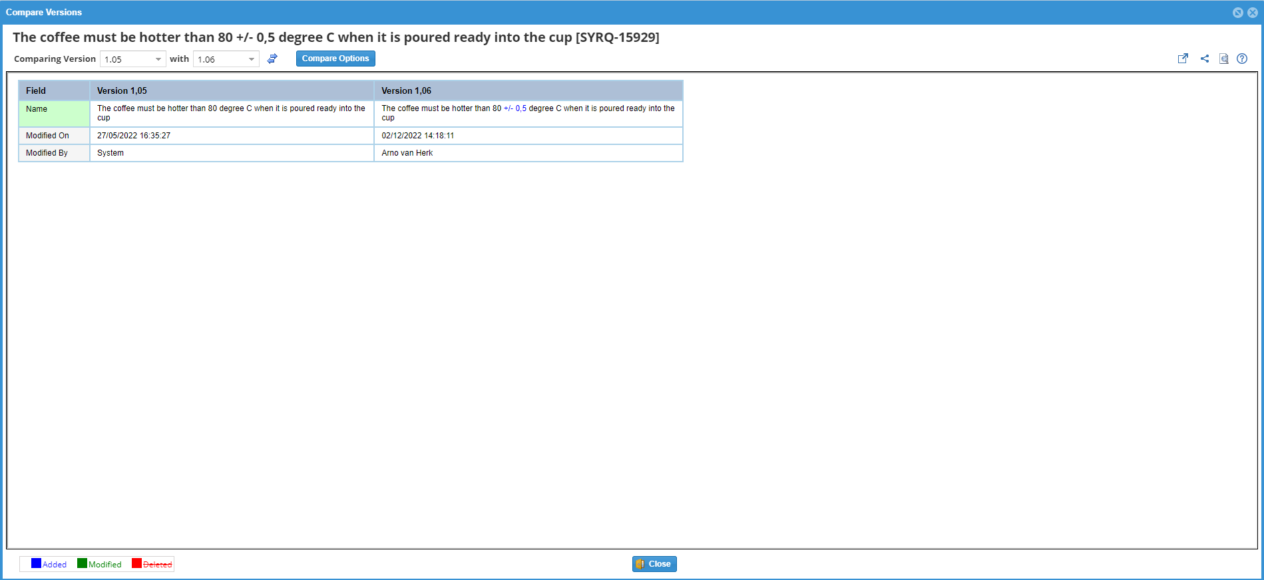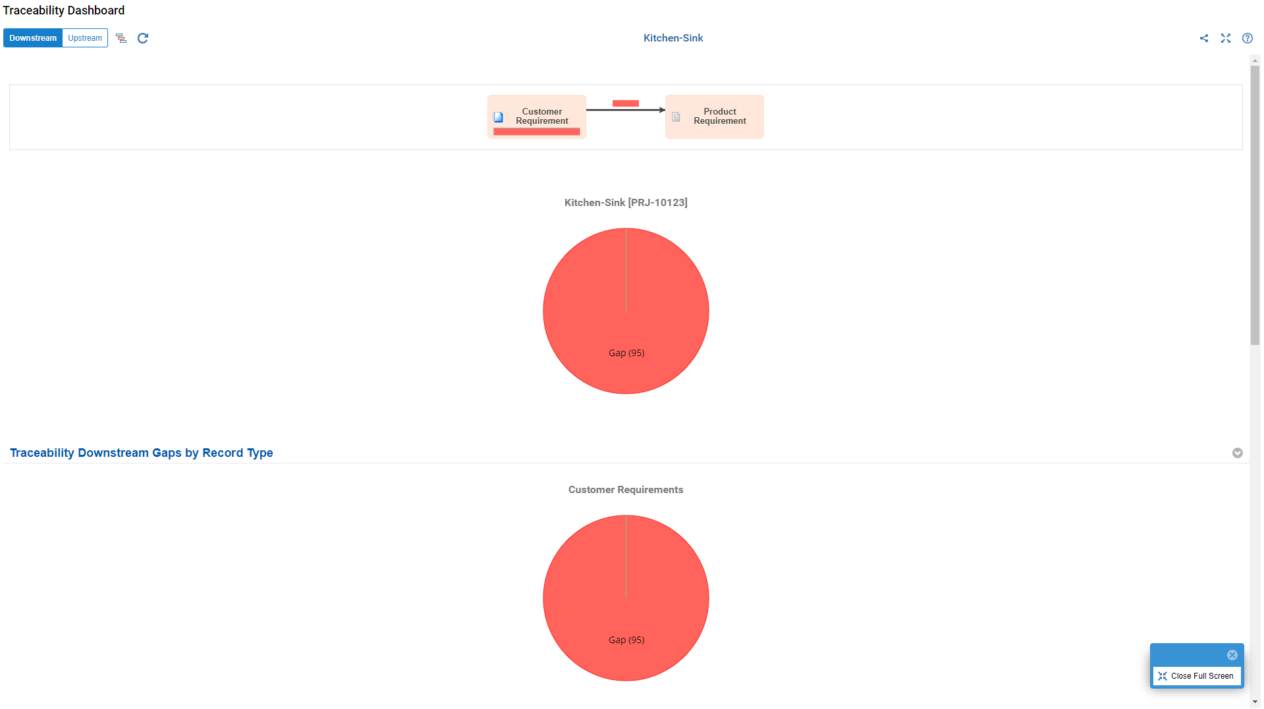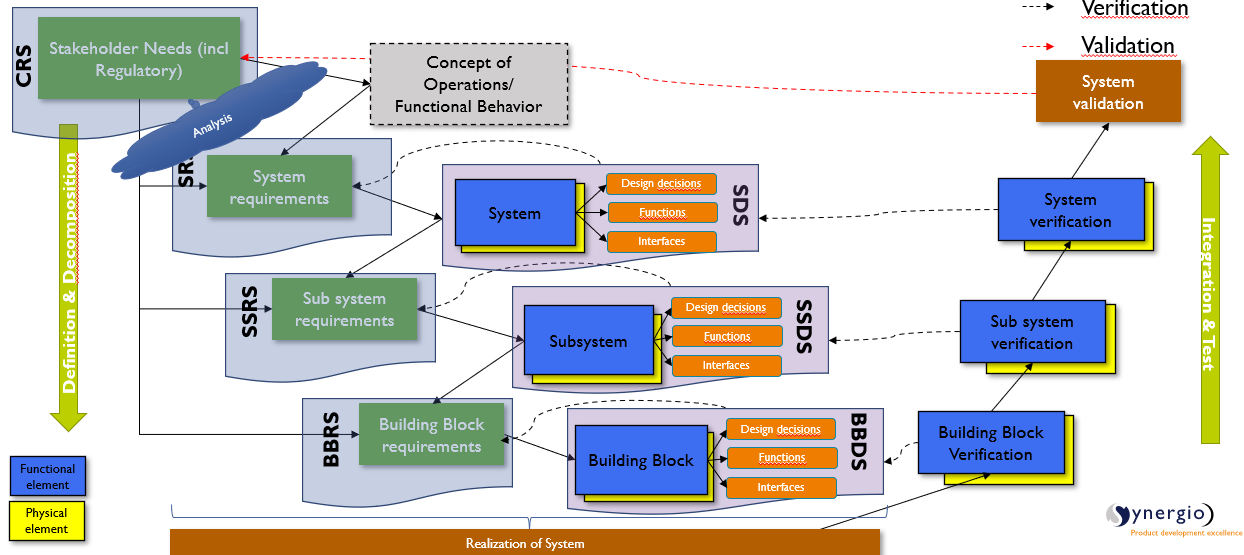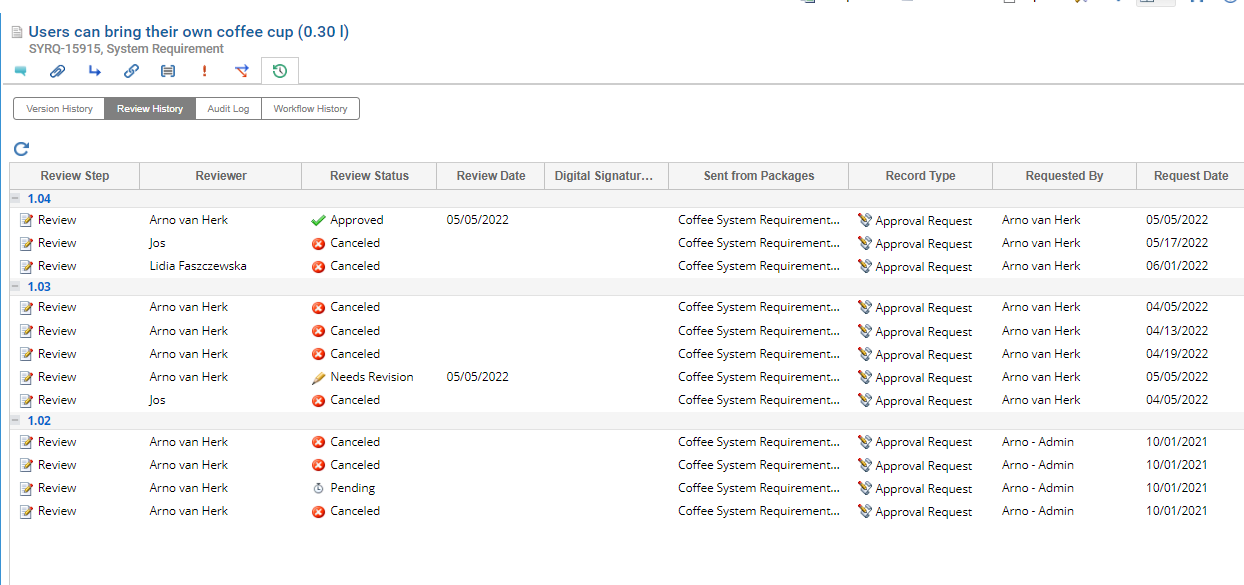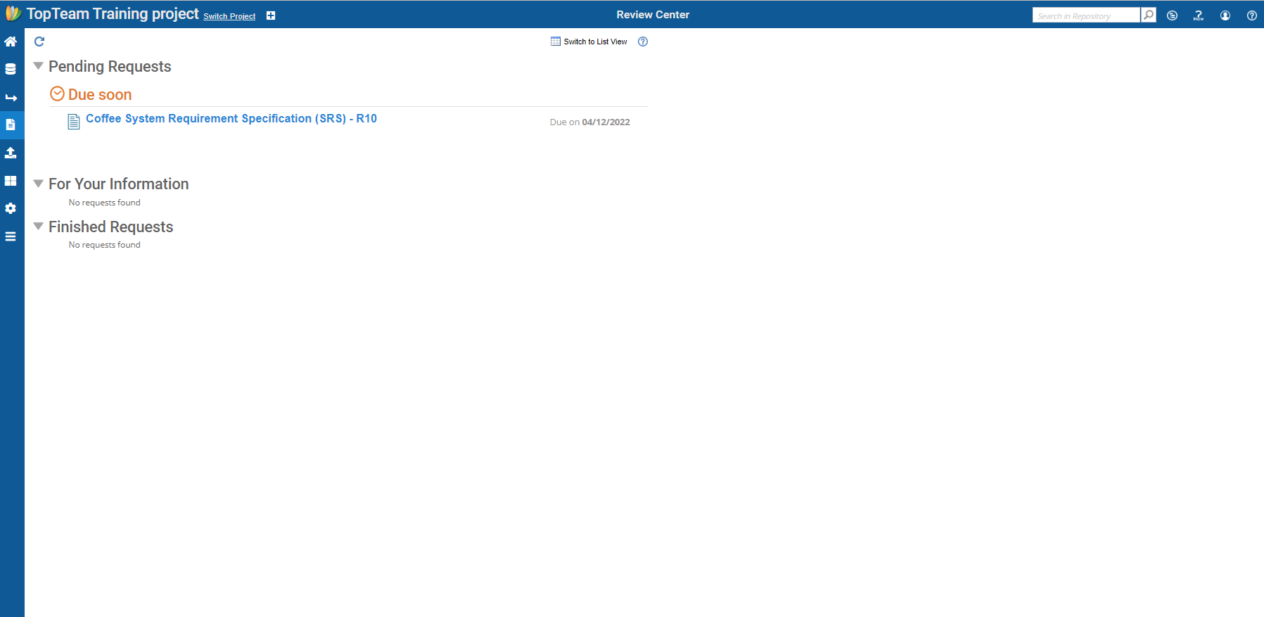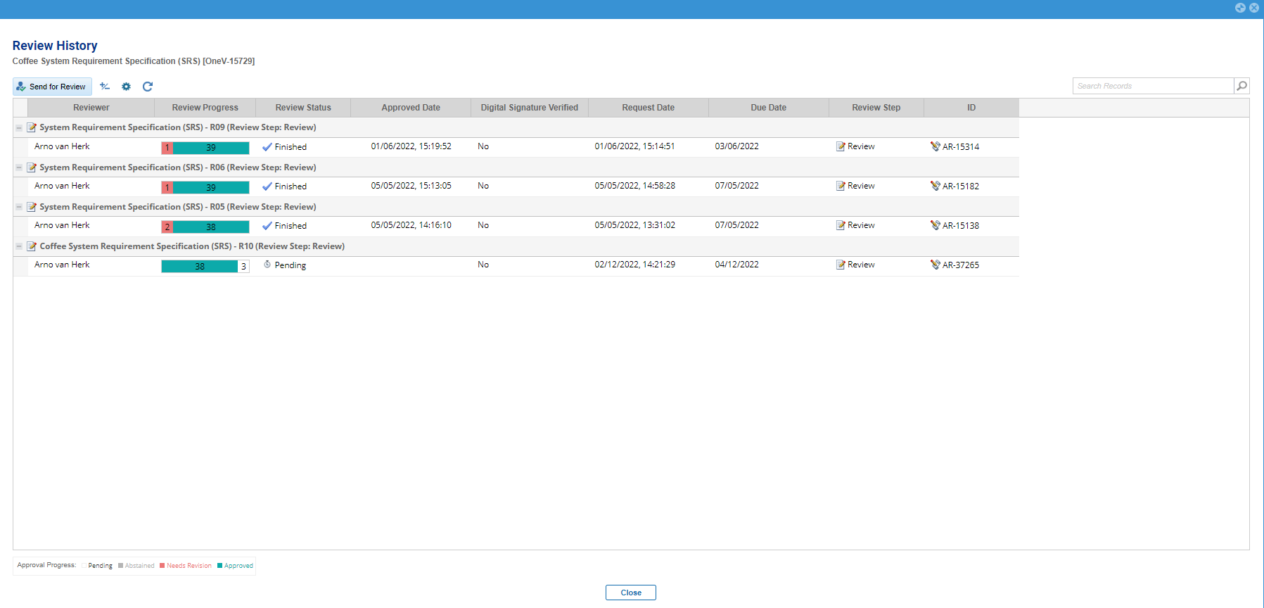Built-In Quality
Built-In Quality
Keep a grip on changes with version control, branching & merging, sharing. The auditlog tells you exactly what happened. Run gap analysis to check if you are complete.

TopTeam Functionality
With its central database storage, TopTeam is the “single source of truth” for system engineers and business analysts. Changes happen, but are done centrally.
In order to provide insight and grip on these changes, TopTeam offers an audit log in which simply all changes can be reproduced when and by whoever, versioning that allows to compare different versions of records and baselines with which information on milestones can be secured. Who is allowed to modify what information is determined by roles and rights, but also by the then-current status of a record.
Again, we can set up TopTeam completely tailored to the needs of your own organization, from simple without too many rules to a watertight whole if your Standard Operating Procedures require this.
An important feature of TopTeam is that we can store work products (requirements, use cases, etc.) integrally with tasks and work packages. Whether this is with traditional work packages or, as in agile methods, with epics, capabilities, features and user stories, by doing work as a team, we deliver results.
Because of the integral setup of TopTeam we can not only find all the information quickly, but through powerful analysis functions we can also discover whether we are missing information, whether there are still outstanding issues, whether we have delivered the right products at the right time.
In other words, with TopTeam we can manage the project to actual and well-founded insight into the content.
One of the models that we use at Synergio to guarantee the quality of the product development process is the Synergio requirements model or “ZigZag model”. Using this, we can implement a model of “visible reasoning” that allows us to easily demonstrate whether the system or product is doing what it is supposed to do, i.e. how good the coverage is.
By implementing this model in TopTeam, we can merge the power of tool and model to demonstrate at all times what your system can or cannot do.
As a team, we cooperate to create a fantastic product. Everyone contributes. By bringing all the expertise together we can deliver high quality.
TopTeam offers a number of useful review and approval facilities. This allows stakeholders to easily deliver their feedback and also explicitly approve or reject matters. If necessary, using a digital signature. The person who has initiated the review can closely follow the progress and results of the review.
